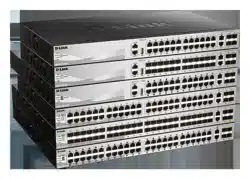Loading ...
Loading ...
Loading ...

DGS-3130 Series Layer 3 Stackable Managed Switch Web UI Reference Guide
210
To view the following window, click L3 Features > OSPF > OSPFv2 > OSPFv2 Passive Interface Settings, as
shown below:
Figure 6-40 OSPFv2 Passive Interface Settings Window
The fields that can be configured are described below:
Parameter Description
Interface Name Enter the interface name that will be used here. This name can be up to 12
characters long.
Select the Default option to use all available interfaces here.
Click the Apply button to accept the changes made.
Click the Delete button to delete the specified entry.
Enter a page number and click the Go button to navigate to a specific page when multiple pages exist.
OSPFv2 Area Settings
This window is used to display and configure the OSPFv2 area settings.
To view the following window, click L3 Features > OSPF > OSPFv2 > OSPFv2 Area Settings, as shown below:
Figure 6-41 OSPFv2 Area Settings Window
The fields that can be configured in OSPF Area Settings are described below:
Parameter Description
Process ID Enter the OSPF process ID here. The range is from 1 to 65535.
Area ID
Select and enter the OSPFv2 area ID here. This can be specified in the IP
address format or in the decimal value format. The decimal range is from 0 to
4294967295. The area will be created on an interface if the subnet configured
on the interface falls within the network range specified here.
Range Select this option to summarize OSPF routes at an Area Border Router (ABR).
Loading ...
Loading ...
Loading ...
